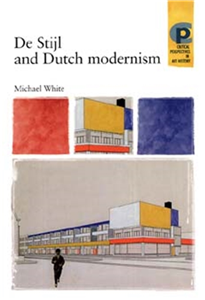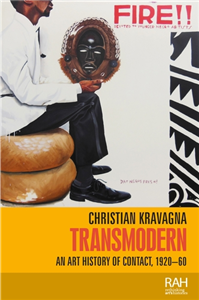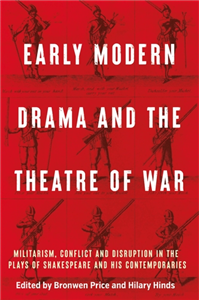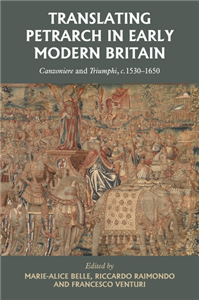Your Search Results
-
Modjaji Books
Modjaji Books is a small, independent, feminist publishing company, that started in 2007 in Cape Town.
View Rights Portal
-
Promoted ContentThe ArtsSeptember 2015
Film modernism
by Sam Rohdie
This book is at once a detailed study of a range of individual filmmakers and a study of the modernism in which they are situated. It consists of fifty categories arranged in alphabetical order, among which are allegory, bricolage, classicism, contradiction, desire, destructuring and writing. Each category, though autonomous, interacts, intersects and juxtaposes with the others, entering into a dialogue with them and in so doing creates connections, illuminations, associations and rhymes which may not have arisen in a more conventional framework. The author refers to particular films and directors that raise questions related to modernism, and, inevitably, thereby to classicism. Jean-Luc Godard's work is at the centre of the book, though it spreads out, evokes and echoes other filmmakers and their work, including the films of Michelangelo Antonioni, Bernardo Bertolucci, John Ford, Howard Hawks, Alfred Hitchcock, João César Monteiro, Pier Paolo Pasolini and Orson Welles. This innovative and eloquently written text book will be an essential resource for all film students. ;
-
Promoted Content
-
 Trusted Partner
Humanities & Social SciencesJuly 2003
Trusted Partner
Humanities & Social SciencesJuly 2003De Stijl and Dutch modernism
by Michael White, Marsha Meskimmon, Shearer West, Tim Barringer
De Stijl was the title of a magazine founded in the Netherlands in 1917 and is now used to identify the abstract art and functional architecture of its major contributors: Mondrian, Van Doesburg, Van der Leck, Oud, Wils and Rietveld. This book is the first to emphasize the local context of De Stijl and explore its relationship to the distinctive character of Dutch modernism. Examines the connection between debates concerning abstraction in painting and spatiality in architecture and contemporary developments in the fields of urban planning, advertising, interior design and exhibition design. Describes the interaction between the world of mass culture and the fine arts. ;
-
 Trusted Partner
Trusted Partner
-
 Trusted Partner
Trusted Partner
-
 Trusted Partner
The ArtsJanuary 2024
Trusted Partner
The ArtsJanuary 2024Transmodern
An art history of contact, 1920–60
by Christian Kravagna,
How can we reconfigure our picture of modern art after the postcolonial turn without simply adding regional art histories to the Eurocentric canon? Transmodern examines the global dimension of modern art by tracing the crossroads of different modernisms in Asia, Europe and the Americas. Featuring case studies in Indian modernism, the Harlem Renaissance and post-war abstraction, it demonstrates the significance of transcultural contacts between artists from both sides of the colonial divide. The book argues for the need to study non-western avant-gardes and Black avant-gardes within the west as transmodern counter-currents to mainstream modernism. It situates transcultural art practices from the 1920s to the 1960s within the framework of anti-colonial movements and in relation to contemporary transcultural thinking that challenged colonial concepts of race and culture with notions of syncretism and hybridity.
-
 Trusted Partner
The ArtsJune 2022
Trusted Partner
The ArtsJune 2022Transmodern
An art history of contact, 1920–60
by Christian Kravagna, Marsha Meskimmon, Amelia Jones,
How can we reconfigure our picture of modern art after the postcolonial turn without simply adding regional art histories to the Eurocentric canon? Transmodern examines the global dimension of modern art by tracing the crossroads of different modernisms in Asia, Europe and the Americas. Featuring case studies in Indian modernism, the Harlem Renaissance and post-war abstraction, it demonstrates the significance of transcultural contacts between artists from both sides of the colonial divide. The book argues for the need to study non-western avant-gardes and Black avant-gardes within the west as transmodern counter-currents to mainstream modernism. It situates transcultural art practices from the 1920s to the 1960s within the framework of anti-colonial movements and in relation to contemporary transcultural thinking that challenged colonial concepts of race and culture with notions of syncretism and hybridity.
-
 Trusted Partner
The ArtsJune 2022
Trusted Partner
The ArtsJune 2022Transmodern
An art history of contact, 1920–60
by Christian Kravagna, Marsha Meskimmon, Amelia Jones,
How can we reconfigure our picture of modern art after the postcolonial turn without simply adding regional art histories to the Eurocentric canon? Transmodern examines the global dimension of modern art by tracing the crossroads of different modernisms in Asia, Europe and the Americas. Featuring case studies in Indian modernism, the Harlem Renaissance and post-war abstraction, it demonstrates the significance of transcultural contacts between artists from both sides of the colonial divide. The book argues for the need to study non-western avant-gardes and Black avant-gardes within the west as transmodern counter-currents to mainstream modernism. It situates transcultural art practices from the 1920s to the 1960s within the framework of anti-colonial movements and in relation to contemporary transcultural thinking that challenged colonial concepts of race and culture with notions of syncretism and hybridity.
-
 Trusted Partner
The ArtsJune 2022
Trusted Partner
The ArtsJune 2022Transmodern
An art history of contact, 1920–60
by Christian Kravagna, Marsha Meskimmon, Amelia Jones,
How can we reconfigure our picture of modern art after the postcolonial turn without simply adding regional art histories to the Eurocentric canon? Transmodern examines the global dimension of modern art by tracing the crossroads of different modernisms in Asia, Europe and the Americas. Featuring case studies in Indian modernism, the Harlem Renaissance and post-war abstraction, it demonstrates the significance of transcultural contacts between artists from both sides of the colonial divide. The book argues for the need to study non-western avant-gardes and Black avant-gardes within the west as transmodern counter-currents to mainstream modernism. It situates transcultural art practices from the 1920s to the 1960s within the framework of anti-colonial movements and in relation to contemporary transcultural thinking that challenged colonial concepts of race and culture with notions of syncretism and hybridity.
-
 Trusted Partner
Trusted Partner
-
 Trusted Partner
Trusted Partner
-
 Trusted Partner
Trusted Partner
-
 Trusted Partner
Literature & Literary StudiesApril 2000
Trusted Partner
Literature & Literary StudiesApril 2000Modernism and empire
Writing and British coloniality, 1890–1940
by Howard Booth, Nigel Rigby
This is the first book to explore the relationship between literary modernism and the British Empire. Contributors look at works from the traditional modernist canon as well as extending the range of work addresses - particularly emphasising texts from the Empire. A key issue raised is whether modernism sprang from a crisis in the colonial system, which it sought to extend, or whether the modern movement was a more sophisticated form of cultural imperialism. The chapters in Modernism and empire show the importance of empire to modernism. Patrick Williams theorises modernism and empire; Rod Edmond discusses theories of degeneration in imperial and modernist discourse; Helen Carr examines Imagism and empire; Elleke Boehmer compares Leonard Woolf and Yeats; Janet Montefiore writes on Kipling and Orwell, C.L. Innes explores Yeats, Joyce and their implied audiences; Maire Ni Fhlathuin writes on Patrick Pearse and modernism; John Nash considers newspapers, imperialism and Ulysses; Howard J. Booth addresses D.H. Lawrence and otherness; Nigel Rigby discusses Sylvia Townsend Warner and sexuality in the Pacific; Mark Williams explores Mansfield and Maori culture; Abdulrazak Gurnah looks at Karen Blixen, Elspeth Huxley and settler writing; and Bill Ashcroft and John Salter take an inter-disciplinary approach to Australia and 'Modernism's Empire'. ;
-
 Trusted Partner
Literature & Literary StudiesAugust 2020
Trusted Partner
Literature & Literary StudiesAugust 20201913: The year of French Modernism
by Efthymia Rentzou, André Benhaïm
-
 Trusted Partner
Literature & Literary StudiesAugust 2024
Trusted Partner
Literature & Literary StudiesAugust 2024Instead of modernity
The Western canon and the incorporation of the Hispanic (c. 1850–75)
by Andrew Ginger
Instead of modernity goes to the very heart of comparative cultural study: the question of what happens when intimate, dynamic connections are made over place and time, what it is to feel at home amid the lavish diversity of culture. This ambitious interdisciplinary book reconsiders foundational figures of the modern western canon, from Darwin to Cameron, Baudelaire to Whistler. It weaves together brain images from France, preserved insects from the Americas, glass in London, poetry from Argentina, paintings from Spain. Flaubert, Whitman, and Nietzsche find themselves with Hostos from Puerto Rico and Gorriti from Argentina. The book ranges over theoretical fields: trauma and sexuality studies, theories of visuality, the philosophy of sacrifice and intimacy, the thought of Wittgenstein. Instead of modernity is an adventure in the practice of comparative writing: resonances join suggestively over place and time, the textures of words, phrases and images combine to form moods.
-
 Trusted Partner
Humanities & Social SciencesJuly 2026
Trusted Partner
Humanities & Social SciencesJuly 2026Modernity and philosophy in Max Horkheimer
On the contemporary relevance of critical theory
by Raffaele Carbone
This book shows that Max Horkheimer's program of critical theory and his research throughout his career as a university professor and thinker are rooted in the cogency of philosophical questions and an in-depth knowledge of the historical development of philosophical problems in their close correlation with the socio-economic framework which shaped the 'bourgeois society' and the Modern Era. Indeed, his analyses of modern philosophers allows us to understand how the bourgeoisie seeks legitimisation and consolidation of its position, partly through the voices of its thinkers. In this way, in his investigation of early modern philosophy problems, and through constant dialogue with his colleagues Adorno, Marcuse, Pollock and Fromm, Horkheimer expresses a profound awareness of the critical force inherent in thought which, admittedly, is ever vulnerable to crisis and weakening, but which can always be reactivated.
-
 Trusted Partner
Social & political philosophyJanuary 2017
Trusted Partner
Social & political philosophyJanuary 2017Subjects of modernity
Time-space, disciplines, margins
by Saurabh Dube. Series edited by Professor Gurminder K. Bhambra
This book thinks through modernity and its representations by drawing in critical considerations of time and space. It explores the oppositions and enchantments, the contradictions and contentions, and the identities and ambivalences spawned under modernity as constitutive of our worlds. Instead of assuming a straightforward, singular trajectory of the phenomena, it discusses modernity as involving checkered, contingent and contended processes of meaning and power over the past five centuries. Subjects of modernity considers the overlaps yet distinctions between modernity, modernism and modernisation, further imaginatively exploring the relationship between history and anthropology. Critically engaging historical anthropology, subaltern studies, de-colonial understandings, and post-colonial procedures, it at once offers an innovative understanding of cultural identities and imaginatively reassess critical perspectives, from South Asia to Latin America. This book will be of interest to students and scholars of anthropology, history, sociology, post-colonial studies and cultural geography, among other subjects, finding adoption in different courses/seminars across disciplines.
-
 Trusted Partner
Literature & Literary StudiesOctober 2025
Trusted Partner
Literature & Literary StudiesOctober 2025Early modern drama and the theatre of war
Militarism, conflict and disruption in the plays of Shakespeare and his contemporaries
by Bronwen Price, Hilary Hinds
This volume explores the disruptive effects of militarism, war and social unrest in early modern drama. Engaging with Simon Barker's seminal work on dramatic representations of war and militarism, contributors highlight what often lies hidden beneath the surface of martial narratives, treating them as formative interventions in contemporary discourses, whether in justifying war, excluding dissident voices or shaping cultural identities. Discussions include new examinations of militarism, the figure of the soldier and early modern theories of war in Shakespearean tragedy, history and comedy, alongside antimasque and dramatic satire by lesser-known playwrights. The essays investigate how ideas of war underpin emerging concepts of gender, leadership, marriage and the family, as well as the continuing mobilisation of Shakespearean drama in the context of modern armed conflict. Together, they offer rich new contributions to the current lively critical debates on this topic.
-
 Trusted Partner
Literature & Literary StudiesAugust 2025
Trusted Partner
Literature & Literary StudiesAugust 2025Translating Petrarch in early modern Britain
Canzoniere and Triumphi, c. 1530–1650
by Marie-Alice Belle, Riccardo Raimondo, Francesco Venturi
Translating Petrarch in early modern Britain gathers twelve essays by international scholars focusing on the translation of Petrarch's vernacular verse (Canzoniere and Triumphi) into English, from the Tudor age to the mid-seventeenth century (and beyond). Approaching translation as an interpretive process, but also a mode of literary emulation and cultural engagement with Petrarch's prestigious precedent, the collection explores the complex and interconnected trajectories of both poetic works in English and Scottish literary milieux. While situating each translation in its distinct historical, material, and literary context, the essays trace the reception of Petrarch's works in early modern Britain through the combined processes of linguistic and metric innovation, literary imitation, musical adaptation and cultural and material 'domestication'. The collection sheds light on the origins and development of early modern English Petrarchism as part of wider transnational - and indeed, translational-European literary culture.
-
 Trusted Partner
Literature & Literary StudiesJune 2022
Trusted Partner
Literature & Literary StudiesJune 2022The early modern English sonnet
Ever in motion
by Laetitia Sansonetti, Rémi Vuillemin, Enrica Zanin
This volume questions and qualifies commonly accepted assumptions about the early modern English sonnet: that it was a strictly codified form, most often organised in sequences, which only emerged at the very end of the sixteenth century and declined as fast as it had bloomed, and that minor poets merely participated in the sonnet fashion by replicating established conventions. Drawing from book history and relying on close reading and textual criticism, this collection offers a more nuanced account of the history of the sonnet. It discusses how sonnets were written, published and received in England as compared to mainland Europe, and explores the works of major (Shakespeare, Sidney, Spenser) and minor (Barnes, Harvey) poets alike. Reflecting on current editorial practices, it also provides the first modern edition of an early seventeenth-century Elizabethan miscellany including sonnets presumably by Sidney and Spenser.
























